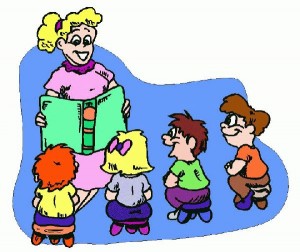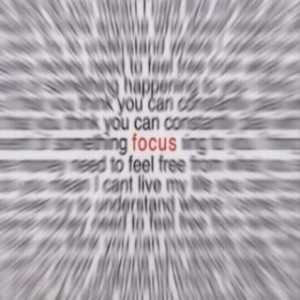Entries from December 2008 ↓
December 31st, 2008 — copywriting, copywriting tips, freelance copywriting
Why?
Any of you reading this with children would have experienced the perpetual ‘but why?’ phase that all children go through. It is a question everyone learns ask from a very early age. Sadly, although my children are rapidly heading towards their teenage years, it is a question that is still being asked with annoying regularity.
When you talk to someone directly it is easy to keep their interest as you can hold their attention with eye contact, your body language, the intonation of your voice and of course dialogue. When you are communicating via the written word you can’t use any of these techniques.
But all is not lost; there is a very simple technique you can use to stimulate a ‘conversation’ with your reader.
Ask Questions
If you are not used to writing in this style it can sound a bit obvious. But it does work. If you ask your reader a question, I can guarantee that they will think of an answer.
Why?
Because its human nature.
They can be:
- Closed questions – those that have a yes or no answer. These are great for closing a sale. They force someone to make a decision to buy.
- Limited questions – those which offer a choice from a set of answers (e.g. which do you prefer, white wine or rosé?) to engage people.
- Open questions – those which have no fixed answers. By using these you hand over conversational control to your reader. They can take their time considering their answer. People love this type of question.
Granted, it will take a bit of practice writing like this as it isn’t a style that comes naturally to many people. But stick with it, it will work.
Sally Ormond
This series of posts was inspired by the writing of Andy Maslen, copywriter (the link takes you to Andy’s Amazon page where you can find his range of excellent copywriting books) and his book ‘Write to Sell’ (Chapter 11).
December 29th, 2008 — copywriting, copywriting tips, freelance copywriting
 If you look back through the history books, you will see that the telling of stories has been a part of our culture for centuries. It was the way information was passed from person to person before the advent of today’s technology.
If you look back through the history books, you will see that the telling of stories has been a part of our culture for centuries. It was the way information was passed from person to person before the advent of today’s technology.
We have all grown up listening to stories – fiction as bedtime stories or fact from stories told to us about the ‘olden days’ by our Grandparents. The human race is preconditioned to listen to stories, which is why freelance copywriters exploit this fact in their sales writing?
I don’t mean ‘Once upon a time…’ stories – you wouldn’t be much of a copywriter if that was how you began every sales message (although I dare say there may be occasions when that could be very effective). But if you can incorporate a story within your copy, it will strike a chord with your reader who then will be unable to resist reading it.
How to incorporate a story
For a sales letter, you can easily don your storyteller’s hat in this way:
Dear Mrs Gregory,
Like you, Dorothy Jones found she was having difficulty in coming up with original material for her sales literature. She spent hours of her time trying to create something fresh and interesting. Then she came across Briar Copywriting. They were fantastic and, from her brief, produced a new and compelling brochure. Sales and enquiries have now increased…
If you are writing webcopy you can use a similar technique but your story would be in the form of a case study. By its very nature, it is already a story.
No matter what type of writing you are incorporating your story into, you must keep its content and subject matter relevant.
Sally Ormond
This series of posts was inspired by the writing of Andy Maslen, copywriter (the link takes you to Andy’s Amazon page where you can find his range of excellent copywriting books) and his book ‘Write to Sell’ (Chapter 11).
December 24th, 2008 — copywriting, copywriting tips, freelance copywriting
 Every writer, at one time or another, has been in the position where their creativity flows unchecked. They can’t stop writing. In certain circumstances that is great, but at other times it can be dangerous leading to ‘over-written’ copy.
Every writer, at one time or another, has been in the position where their creativity flows unchecked. They can’t stop writing. In certain circumstances that is great, but at other times it can be dangerous leading to ‘over-written’ copy.
But to be an expert freelance copywriter you have to learn that it isn’t all about being short, snappy and to the point. Sometimes the copy needs to be fairly lengthy. The trick is learning when which one is appropriate.
If your brief calls for short and snappy you have to be ruthless and cut your copy to the bone. There is no room for creative flair – your copy must be concise and to the point.
Quite often long copy is called for when writing for the direct mail market – believe it or not, people to actually read those long press ads that you see and those multi-page sales letters.
One famous example of long copy in press advertising was an ad for Merrill Lynch. It took up a whole page in the New York Times – seven columns, tiny type, no pictures and a total of 6,540 words! Guess what? It drew in 10,000 requests for a booklet mentioned towards the end of the ad*.
What can we learn from this? Well, in short, what matters the most is how interesting your copy is to the reader NOT its length. No matter how long your copy, if it isn’t interesting no one is going to read it. And if no one reads it, it isn’t going to sell. And if it doesn’t sell, your client will go out and find a new copywriter.
There is one golden rule to remember though when writing long copy (and short for that matter) – always plan, plan, plan. If you don’t you will turn off your reader and they will be lost forever.
*Write to Sell – The Ultimate Guide to Great Copywriting, Andy Maslen (p.81) – Link takes you to Andy’s Amazon page where you can find all his excellent books on copywriting
December 23rd, 2008 — copywriting, copywriting tips, freelance copywriting
 Before I begin I just wanted to make one thing clear – this series of articles won’t make you an effective copywriter over night. To become an expert freelance copywriter takes time and practice (and a bit of natural talent).
Before I begin I just wanted to make one thing clear – this series of articles won’t make you an effective copywriter over night. To become an expert freelance copywriter takes time and practice (and a bit of natural talent).
OK, that’s the disclaimer over and done with. Now for the first lesson…
Are you sitting comfortably? Then I’ll begin. Copywriting, or sales writing, is worth its weigh in gold when done properly. If you have been reading my other blogs you would already have learned how to identify your reader, learned how to plan effectively, sell the benefits of your product and how to implement AIDA.
Now though, I want to take a look at the actual writing. The persuasiveness of your copywriting all comes down to your ability to convey a convincing tone of voice, your choice of words and your ability to produce punchy sentences.
In this blog I want to concentrate on staying focused.
Here is a list of what you must focus on when writing:
Not a long list so it should be easy to remember. Everything you write must mean something to your reader. Let me use a fishing analogy here – if your line of words is taut, your fish (reader) will remain hooked, let it go slack and they will swim off towards one of your competitors.
It all starts at the beginning
The most important part of your writing is the initial sentence – this is your opportunity to hook your reader:
- Address them directly
- Create empathy to get their attention
- Talk to them
When you are writing, imagine you are holding a conversation with your reader. Engage them and keep their interest. If you don’t you will run the risk of them gazing out of the window, seeing one of your competitors’ posters and then they will be lost forever. So keep in interesting and avoid clichés.
Next time, I will address the brevity vs long copy debate.
This series of posts was inspired by the writing of Andy Maslen, and his book ‘Write to Sell’ (Chapter 11).
December 22nd, 2008 — copywriting, copywriting services, freelance copywriting

Congratulations! You have made it to the final hurdle. Over the past few days you have been learning how to grab your readers’ attention, get their interest, and create a desire for your product. At last the finish post is in site: now all you have to do is get them to take action.
Just because you have managed to create a desire for your product, doesn’t necessarily mean that your reader is going to buy. The best way to get your reader to take action is through the use of testimonials.
These are a great motivator and a tool that every freelance copywriter should have in their writing arsenal. People love to hear about the experiences of others. If your past clients have produced their own testimonials don’t edit them. They may contain the odd grammatical or punctuation error but this is exactly what you want – it makes them real.
Another way to get your readers buying is by offering free samples, statistics, a free trial or money-back guarantee. If you have these available why not use them all or a combination plus testimonials – just do whatever you feel necessary to get your reader to take action.
The call to action
If this is weak, the rest of your hard work would have been wasted.
They don’t have to be saved for the final paragraph. Sprinkle them throughout the sales letter or, if using email, use hyperlinks so once the decision to buy has been made your reader can act immediately.
Here are a few things to avoid when writing your CTA:
- Ambiguity is bad – don’t confuse your reader
- Watch your wordiness – you’ve made your pitch now get straight to the point
- Don’t be vague – leave them in no doubt as to what they need to do
Put simply, your CTA should be short, simple, direct and clear:
- Give them different ways to get in touch/place their order (e.g. email, fax, phone)
- Give them a clear and simple-to-complete order form
- Make it a command – ‘order now’ ‘order by 1st February’
There you go. That’s it. Your lesson is now over.
These techniques aren’t exclusively for sales letters. No matter what you are writing always remember: AIDA – Attention – Interest – Desire – Action and you can’t go wrong.










